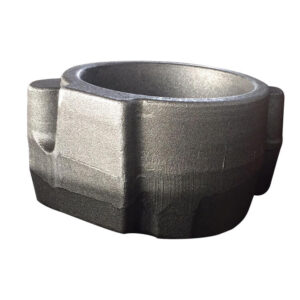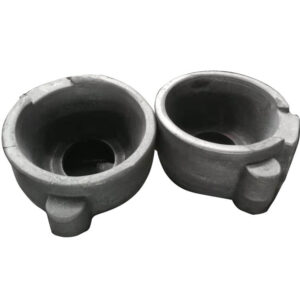Impression die forging
What is Impression Die Forging?
Impression die forging, also known as closed-die forging, is a manufacturing process where a metal billet is deformed between two or more dies (molds) that contain a precut impression of the desired final part shape. The dies are pressed together, forcing the metal to flow and completely fill the die cavities, resulting in a forged part that closely matches the design specifications.
The Impression Die Forging Process Flow
The process typically involves the following steps:
Billet Heating: The raw metal billet is heated to a specific temperature (forging temperature) to increase its plasticity and reduce flow stress.
Preforming: The heated billet may undergo a preliminary shaping operation (e.g., blocking or edging) to distribute the metal roughly for better final die filling.
Forging in Impression Dies: The preformed billet is placed in the lower impression die. The upper die descends with high pressure, forcing the metal to deform and fill the entire die cavity. Excess metal flows out into a small gap called the “flash gutter,” forming “flash.”
Flash Removal: After forging, the flash (thin excess metal around the part) is trimmed off in a separate trimming die.
Finishing Operations: Secondary operations such as heat treatment (for enhancing mechanical properties), shot blasting (for cleaning), and machining may be performed to meet final dimensional and surface finish requirements.

Size of Parts in Impression Die Forging
Impression die forging is highly versatile in terms of part size. It can produce components ranging from very small (weighing a few ounces/grams), such as wrenches or surgical tools, to extremely large parts weighing several tons. Large forgings like crankshafts for ships, turbine rotors for power generation, and structural components for aerospace applications are commonly produced using this method.
Key Industries and Applications
This forging process is critical in industries that require high-strength, reliable metal components.
Aerospace: Turbine disks, blades, engine mounts, landing gear components, structural parts.
Automotive: Crankshafts, connecting rods, transmission gears, axle beams, suspension components.
Oil & Gas: Valve bodies, drill bits, wellhead equipment, flanges, high-pressure fittings.
Heavy Machinery & Defense: Gears, track shoes, armor plates, cannon components.
General Industrial: High-strength fasteners, tools, hydraulic components.
Key Factors in Impression Die Forging
Several factors are crucial for producing high-quality impression die forgings:
Die Design: Precision in die cavity design, including draft angles, fillet radii, and parting line location, is essential for successful metal flow and part ejection.
Material Selection: The choice of metal alloy (aluminum, steel, titanium, etc.) must align with the part’s performance requirements.
Forging Temperature: Precise control of the billet heating temperature is vital to prevent defects like cracking or incomplete filling.
Lubrication: Proper die lubrication reduces friction, prevents sticking, improves metal flow, and extends die life.
Press Capacity & Force: Sufficient forging pressure must be applied to ensure complete die filling and proper grain structure refinement.
Characteristics and Advantages
Superior Strength & Toughness: The forging process refines the metal’s grain structure and aligns it to the part’s shape, resulting in excellent mechanical properties.
High Dimensional Accuracy & Repeatability: Parts have close tolerances and consistent quality in high-volume production.
Material & Cost Efficiency: Although initial die cost is high, it becomes economical for medium to high production volumes. Minimal material waste compared to machining from solid block.
Versatility in Shapes & Sizes: Capable of producing a wide range of complex geometries and sizes.

Custom Complex Impression Die Forging Services
We specialize in providing custom impression die forging solutions tailored to our clients’ specific requirements. Our engineering team can design and manufacture complex forging process flows to produce intricate, high-performance components that meet the most demanding applications. From material selection and die design to final finishing, we work closely with you to ensure the forged part exceeds your expectations.
